Talking about ‘Real Ghostbusters’—including the show’s history and impact
“The Real Ghostbusters really holds up to the test of time because the writing on the series was just so great.”
Expert Ghostbusters fans Troy Benjamin and Craig Goldberg talked with LOTS of people for their new book The Real Ghostbusters: A Visual History
For the folks at Monster Complex—well, me—Ghostbusters is, of course, a big deal. The original 1984 classic supernatural workplace comedy starred Bill Murray, Dan Aykroyd, Harold Ramis, Ernie Hudson, and Annie Potts. The team’s unique angle was they offered pest control if your place is infested with haunting apparitions.
You know. Ghosts.
The popularity of the hilarious (and very cool) original movie led to Ghostbusters becoming a huge brand. This has continued over the decades with movies, games, comic books, merch, a huge number of fan groups, theme park attractions, and even charity events.
One of my favorite follow-ups was the cartoon show The Real Ghostbusters. Launched in 1986, Real Ghostbusters brilliantly expanded on the original movie. (And even influenced the movie’s first sequel.)
In 2026, The Real Ghostbusters will be celebrating its 40th anniversary. Exploring the animated show’s splendiferousness (yes, that’s a word), the new book The Real Ghostbusters: A Visual History is a hefty volume for which authors Troy Benjamin and Craig Goldberg interviewed LOTS of people involved with the cartoon show and its related toys.
The authors talked with Monster Complex about what inspired them to write this book, their personal history (and expertise) with the Ghostbusters brand, and why they interviewed more than 30 people for this book.
Table of Contents
In this article:
About the book The Real Ghostbusters: A Visual History (including the amazing deluxe edition!)
Links to find the book The Real Ghostbusters: A Visual History
This post contains some affiliate links. If you click the link, I earn a small commission. (At no extra cost to you. So relax.)
1
About the show The Real Ghostbusters
The animated series The Real Ghostbusters quickly followed the original movie when it launched in 1986. It was a rare case of a cartoon show that kicked off simultaneously as both a syndicated show (65 episodes) and Saturday morning series on the ABC network (13 episodes). It was a joint production of DIC Enterprises and Columbia Pictures Television.
The show continued the escapades of paranormal pest control techs Dr. Peter Venkman, Dr. Egon Spengler, Dr. Ray Stantz, Winston Zeddemore, and Janine Melnitz. Added to the cast was the mascot ghost Slimer.
The Ghostbusters cartoon spin-off The Real Ghostbusters made an impression with its clever writing, fantastical animation, and excellent voice cast. The simultaneous toy launch from Kenner energized the property with some of the most-beloved, weirdest, and best-selling toys in pop culture.
2
About the book The Real Ghostbusters: A Visual History
Available soon, The Real Ghostbusters: A Visual History by authors Troy Benjamin and Craig Goldberg chronicles the history of The Real Ghostbusters with creator interviews, original animation scans, toy photography, and much more.
And now the book The Real Ghostbusters: A Visual History is a collector’s dream. This franchise overview combines rare and never-before-seen visuals including conceptual artwork, storyboards, script excerpts, internal memos, packaging art, unseen prototypes, abandoned concepts, and brand-new stunning photography with new and exclusive interviews.
And what about that deluxe edition? In addition to all the other great features, this deluxe edition package also includes:
An exclusive firehouse-inspired slipcase.
A folio enclosing two acetate “animation cel” replicas.
A unique firehouse flagpole-inspired ribbon bookmark.
3
Troy Benjamin. Craig Goldberg. The Real Ghostbusters: A Visual History.
About the authors Troy Benjamin and Craig Goldberg
Troy Benjamin hosts the podcast Ghostbusters: Interdimensional Crossrip and runs the fan site Ghostbusters HQ. He’s also written other materials for Ghostbusters including the Haynes Ecto-1 Owner’s Workshop Manual.
Craig Goldberg hosts and produces a few different podcasts and YouTube channels (including the Yes Have Some podcast) with a huge focus on the Ghostbusters franchise. He has also traveled the globe covering Ghostbusters movies, media, and merchandise.
4
Interview: Troy Benjamin and Craig Goldberg on their book The Real Ghostbusters: The Ultimate Visual History
#1) As much as I still love The Real Ghostbusters (and recently started re-watching it), that show was made like 40 years ago. What inspired you authors to write this book about it now?
Troy: Sorry, I feel super old now. I’m going to need a minute. Craig, this was your idea to start. Why don’t you take this one?
Craig: My initial idea was to write a book that primarily focused on the toys and action figures produced by Kenner. But once we got going, we realized that a more comprehensive history of The Real Ghostbusters animated show in addition to the story of the toys could really be something special.
We’ve both been covering Ghostbusters news and media for years, and Troy is an established author, so the stars just aligned to put it all together. I figured that at some point, somebody would try to tell this story. Especially since the 40 year anniversary of Real Ghostbusters is coming up in 2026.
We felt that we could really do it in a way that showcased just how important and special Real Ghostbusters is even all these years later.
Troy: Perfect answer. I think I’d also just add that there seems to be a Ghostbusters animation revival happening. As I’m sure you’re realizing in your rewatch that you just began, The Real Ghostbusters really holds up to the test of time because the writing on the series was just so great.
I think for that reason, Real Ghostbusters has been getting a lot of love on streaming platforms. And several companies like Hasbro and Mondo have latched onto the love of the series and have been releasing new and retro products that have been selling really well.
But when Craig came to me with the idea, I was hooked immediately. I love a good process story and I love a good behind the scenes book like Rinzler’s Star Wars volumes and Don Shay and Jody Duncan’s Making Ghostbusters and Jurassic Park books. This was really right in my wheelhouse, so it was easy for me to jump on board when Craig asked.
#2) What was your first introduction to the Ghostbusters overall? (And in what way?) What made you such a fan of the idea of Ghostbusters?
Craig: I was born a few months before Ghostbusters came out and I probably watched the first movie when I was two years old, maybe even earlier. My parents loved comedy, so I was exposed to Ghostbusters, Stripes, SNL, and Caddyshack at a really young age.
I was three when the cartoon debuted and the toys started to hit, and from there it was just all Ghostbusters for me. I didn’t care about Star Wars or Masters of the Universe at all. I wanted to be as funny Peter Venkman and as smart as Egon Spengler. Proton Packs were way cooler to me than light sabers.
Troy: I was one of those weirdos who hadn’t seen the original Ghostbusters movie until it aired as the Sunday Night Movie on ABC. Again, feeling super old. You used to have to either wait for the lone VHS tape to be available to rent or for the movie to air on broadcast TV so you could record it to a tape.
But around that time, Real Ghostbusters had started airing and caught my eye as did the toys and I think it was an instantaneous chemical reaction for me. Technology, the supernatural, with an edge of humor, it was like the perfect storm for seven-year old me just as it is for… much older me… now.
And when I finally was able to see the original film, it really cemented my love for it. Just as I know Craig was, I was front row center when Ghostbusters II was first released in theaters. It all hit at the exact perfect time for me.
#3) Reading the book’s description, it sounds like The Real Ghostbusters: A Visual History is jammed full of info about the cartoon series. What all is in this book? How were you able to dig into its history like this?
Troy: The great thing about these visual history coffee table books is that you can really throw everything and the kitchen sink into them. For starters, you have the full and complete behind-the-scenes story of the series itself: how it originated, who all was involved with it, the challenges it faced, and ultimately why it disappeared around 1991.
To do that, Craig and I spent a great deal of time tracking down the production cast and crew, some of whom haven’t worked in the animation or television industry for quite some time, some of whom are incredibly successful and rarely give interviews because their time is so precious.
The same was true for the Kenner toys story. There’s really a great beginning, middle and end arc to the toys, just as there was for the series. We found the best way to tell these stories was with the voices of all the people who were there, so the interviews were incredibly important to us.
In all, we did over 30 new interviews for the book. We also had access to a great deal of archival interviews with those who either have passed on to the other side or weren’t able to participate for one reason or another.
So that’s the skeleton of the whole thing. Then packed on top of that, we worked with the production crew and artists, the archival team at Hasbro, the archival teams at the studios and some of the executives’ personal papers, and a lot of private fan collectors to track down as much visual material that we could. Animation cels, production artwork, model sheets, concept art, photos, you name it we were able to grab a lot of things fans have never seen before and print them.
Then, most importantly, we worked with Eric Reich and the amazing group at Ghost Corps very closely on this. Including the executive producer of the show Joe Medjuck himself, who kept a watchful eye over us.
What we found was that Michael C. Gross and his assistants over the years meticulously curated and maintained memos, production documents, and even hand written notes that had been preserved over the years which gave us a unique opportunity to act as archeologists and piece this story together down to the date and time things happened. And in doing so, we made a lot of discoveries along the way that I think new and old fans of the series will really be surprised by.
#4) When Real Ghostbusters was originally created, those writers did an amazing job expanding on the original movie. (And even influenced the second movie!) What are some of your favorite examples of how the cartoon built on the ideas of the original movie?
Craig: For me, it’s the notion of the four unlikely heroes working as a team, enjoying the momentary glory of saving the day, and then back to the grind.
One of my favorite episodes of the show is “Ghostbuster of the Year,” where they’re all individually hunting down the ghost of Charles Foster “Hearse.” You know, the Citizen Kane/Rosebud episode. Winston is getting annoyed with everyone for wanting to split up and find the ghost on their own, to get the big magazine cover. He keeps talking about how that kind of stuff doesn’t matter, and that they should work together as a team. But deep down, he kind of knows that the recognition would be nice.
The writers did an incredible job in capturing the voice and tone of the individual characters. A lot of Peter Venkman’s lines are laugh-out-loud funny, especially in the earlier episodes.
Troy: I think that’s just it, The Real Ghostbusters had time to live and breathe with each of the characters that the 90-minute feature films didn’t have the luxury to explore. So we really got to know the personality types and traits of each of the characters more so than you were able to in the original film.
I also think it’s super important that the writers that were working on the series like J. Michael Straczynski, Richard Mueller (who actually even wrote the original movie’s novelization), Pamela Hickey, and Dennys McCoy, just to name a few were all incredible sci-fi and comedic writers and, in most cases, were really free to tell good stories of varied genres so that the show could really branch out to all sorts of fun places.
And, like you said, because the animated series was so popular and had captured such an audience, it even influenced Ghostbusters II in several ways—which many of the people we spoke to had a lot to say about in the book. Some fun stories and opinions there waiting for you.
#5) How does your new book help readers understand and appreciate Real Ghostbusters even more?
Troy: I think, at the core of it, The Real Ghostbusters: A Visual History really celebrates each and every person who touched both the show and the toys that made them such a part of the zeitgeist in the late 1980’s and into the 90’s.
As you’ll learn in the book, the animators worked exhausting hours to make sure the show was of great quality because they cared so much about it, while fighting an absolutely bonkers schedule that had been handed to them for the first 78 shows.
Meanwhile at Kenner, you’ll learn in the book that the staff there was comprised of a really talented bunch of geniuses who could have just as easily been providing their talents to NASA JPL instead of working in a chemistry lab on a version of Ecto-Plazm that didn’t stick to carpets.
Like all of the greatest pop culture stories, these were all super talented and creative people who came together at a very special point in time, with a blue sky and plenty of runway, and they really flew.
Craig: Definitely, like Troy said, Real Ghostbusters was such a moment in time. And if you look at the timeline, it was only around for about 5-6 years. It was such a flash that burned brightly and quickly. Kenner sold millions of toys and the show was a phenomenon.
It’s exciting to be able to document just how special the show was, and what I really think readers will take away from the book is that the level of talent that was involved is remarkable. There’s countless examples of extremely successful writers, animators, and Hollywood executives who all got their start on Real Ghostbusters.
And when it comes to Kenner, that’s like a story within the story. The engineering and craftsmanship that went into creating action figures in the 1980s is really special plus Kenner just seemed like an incredible place to work. They had huge success with Real Ghostbusters and it’s still one of the most legendary toy lines of all time.
#6) What are the best ways to keep track of how you continue to celebrate Ghostbusters (and related kinds of stories)?
Craig: I host and produce a few different podcasts and YouTube channels, (YHS Podcast & Toy Anxiety) both with a huge focus on the Ghostbusters franchise. Since 2016, and with the releases of Ghostbusters: Afterlife and Frozen Empire, we’ve had the opportunity to do some really in-depth coverage.
Troy: Same here. I have a podcast called the Ghostbusters: Interdimensional Crossrip and a fan site that I’ve been running since 1996 called Ghostbusters HQ. And we’re on all the socials. I’ve also written other materials for Ghostbusters including the Haynes Ecto-1 Owner’s Workshop Manual. But also if you buy me a beer, I will clearly talk your ear off about Ghostbusters for far longer than you’d probably care for.
5
Find The Real Ghostbusters: A Visual History Regular Edition
Find The Real Ghostbusters: A Visual History Deluxe Edition
6
Find more about the authors online
Troy Benjamin
Craig Goldberg
Yes Have Some (YouTube)
Yes Have Some (Facebook)
7
Related links about The Real Ghostbusters
11 Sci-Fi Versions of ‘A Christmas Carol’ including that amazing Real Ghostbusters Christmas episode (Monster Complex)
Real Ghostbusters: 100 Episodes of Series Streaming FREE (Ghostbusters News)
Real Ghostbusters Has a New Streaming Home, and It’s Free! (Collider)
You can also own episodes of The Real Ghostbusters for streaming (Fandango at Home)
Real Ghostbusters on DVD (Barnes & Noble)
The Real Ghostbusters: A Visual History (Penguin Random House)
8
Best episodes of The Real Ghostbusters
The Real Ghostbusters: The 20 Scariest Episodes (Den of Geek)
The 10 Best Episodes of The Real Ghostbusters, Ranked (MovieWeb)
Top 10 Best and Worst Episodes of The Real Ghostbusters (Ghostbusters Wiki | Fandom)
Vault Master’s Top Ten “Real Ghostbusters” Episodes (The B-Movie Film Vault)
Real Ghostbusters / Top Ten Episodes! (Cereal Geek TV)
9
Ghostbusters related links
21 Great Halloween Pop Songs including “Ghostbusters” (Monster Complex)
Silly and Thrilling, Ghostbusters Made History and Documented It Too (Washington City Paper)
Ghostbusters firehouse a tourist hot spot (Fox News)
Original Ghostbuster Dan Aykroyd defends Paul Feig’s 2016 Reboot: “I Liked the Movie” (MovieWeb)
All-Female Ghostbusters Movie Doesn’t Get Enough Credit (For A Few Reasons) (Cinemablend)
How Ghostbusters: Afterlife pulled off its tribute to Harold Ramis (Los Angeles Times)
Sony Pictures Launch New Fundraising Campaign ‘Ghostbusters Give Back’ (Ghostbusters News)
Ghostbusters Day Returns With Fundraising & New Merch (Screen Rant)
This Year’s Ghostbusters Day Fan Film Marathon Now Streaming (Ghostbusters News)
10
More from Monster Complex
The Vampire Issue: Faith Hunter, L.A. Banks, Anne Rice, Buffy Vs. X-Files, More!
The Zombie Issue: Isaac Marion, Justina Ireland, Zombie Comedy Movies, More!
The Godzilla Issue: Godzilla, Kong, and Gamera Movies, Games, Cartoons, More
Cyberpunk? Best books, movies, more exploring a dystopian future with “high tech and low life”
28 Striking Vampire Books—including horror, romance, fantasy, and comedy titles
60+ Special Vampire Book Series—from Anne Rice, L.A. Banks, Charlaine Harris, more
Best Zombie Books: 50 Great Zombie Novels from Colson Whitehead, Seanan McGuire, Isaac Marion, more
Mummy Fiction Books by Anne Rice, Bram Stoker, R.L. Stine, more
‘Classic Monsters Unleashed’ by Jonathan Maberry, Seanan McGuire, Owl Goingback, and more
Toho vs. Marvel for ‘Godzilla Destroys the Marvel Universe’ comic book event
Godzilla: Surprising facts—like when the Japanese studio said “That’s not Godzilla”
Johnny Sokko and Giant Robo—Theme Song, The History, and The Giant Monsters
How All 3 Cloverfield Films Are Connected (And wait—what about the 4th movie?)
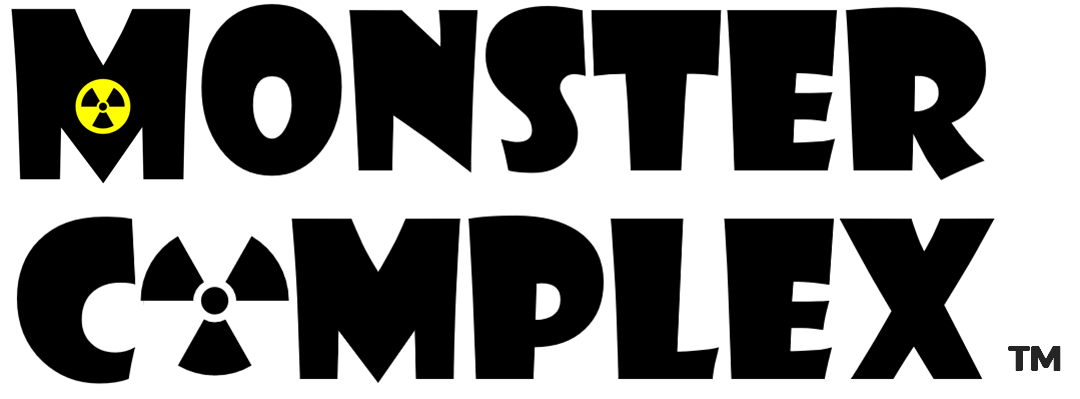
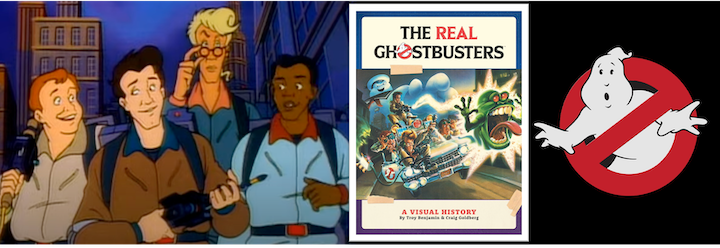
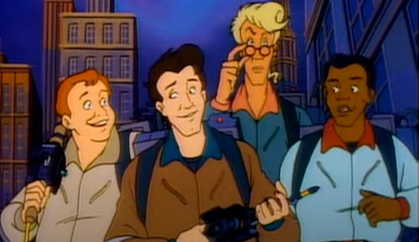

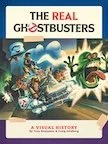
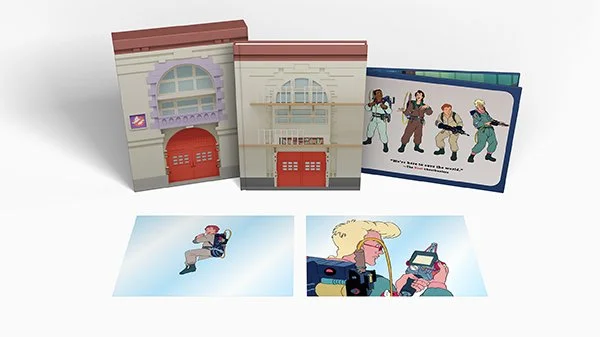


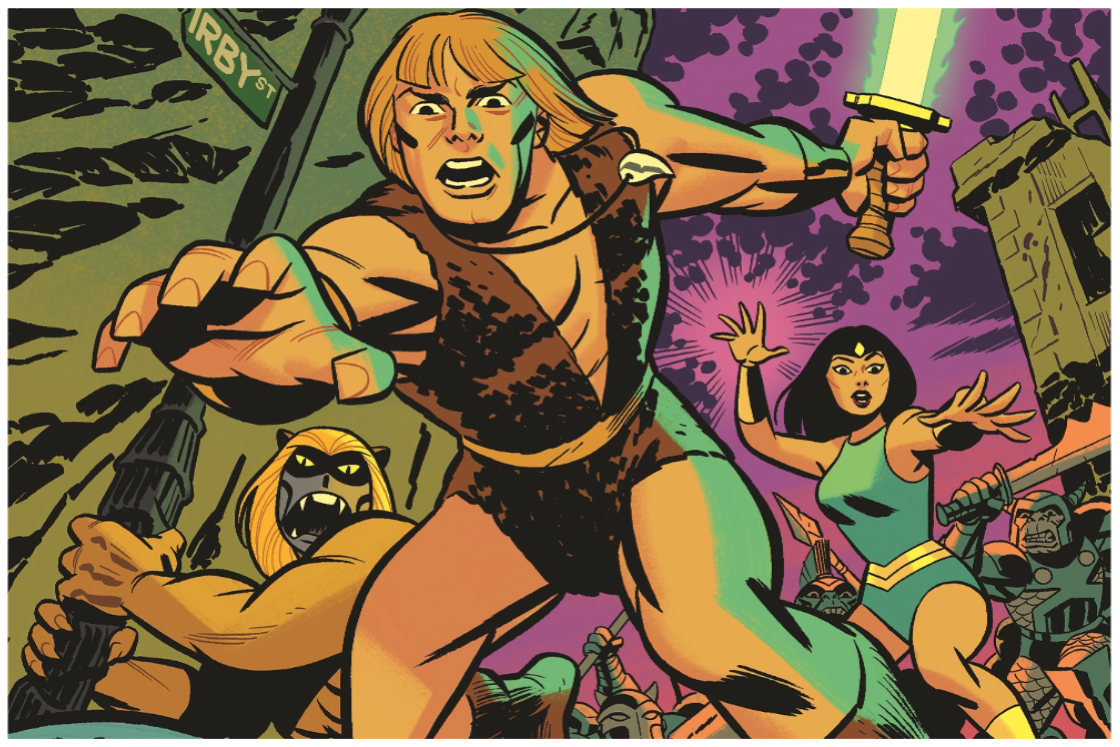

















Translator Jeffrey Angles talks making the original 1960s Mothra fiction available in English! “Tōhō’s monster movies are great fun, but they are also fantastically revealing windows….”